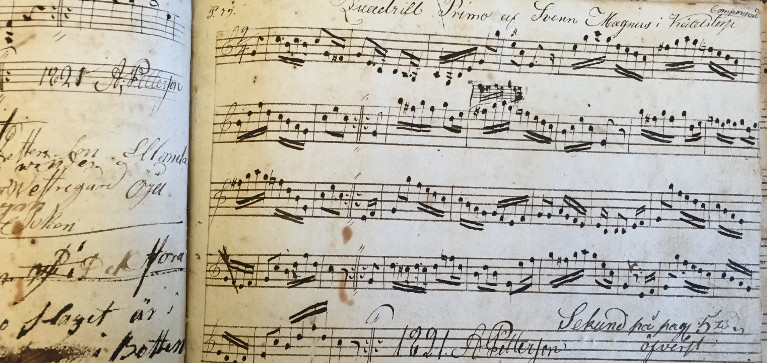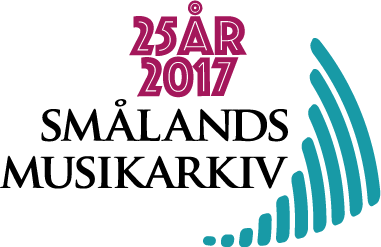News: The preliminary conference programme is now available. Get it here.
Musicians’ handwritten notebooks containing dance music repertoire are a fascinating type of source for music and its cultural contexts. This kind of handwritten notebook, especially abundant in Scandinavia in the 18th to 19th centuries, is material that today attracts increased attention from scholars and musicians. The notebooks we refer to – sometimes called fiddlers’ notebooks or folk musicians’ notebooks – contain primarily (but far from exclusively) popular dance tunes of the time, usually instrumental music in one or two parts.

As a part of the 25th anniversary celebration of Smålands Musikarkiv (The Music Archives of Småland) in 2017, jointly hosted by the Linnaeus University and Musik i Syd, and in cooperation with other Scandinavian sister institutions, we invite you to a three-day conference with concerts and workshops in Växjö, Sweden on November 21-23, 2017. In this way we want to highlight and discuss the position of handwritten dance music notebooks within both historical and contemporary contexts.
These dance music notebooks can serve as a tool for better understanding the contemporaneous dance and music life that they belonged to, as well as the literacy culture. Who filled these handwritten notebooks, with what tunes, and how were they used? Similar types of notebooks – often with the same tunes – are to be found throughout Scandinavia, in Europe and beyond. Thus they may give rise to further questions about similarities and differences within and between countries regarding the repertoires in the notebooks and those who wrote them. Today, many tunes from these fiddlers’ notebooks are popular among musicians in Scandinavia, especially those interested in folk and early music; tunes are interpreted, performed and taught by a growing number of musicians and teachers.
Although the concept of “folk musicians’ notebooks” might suggest a use primarily among a broader demographic category, that was often not the case in the past. On the contrary, one of the most interesting aspects about these notebooks is that they often reflect a dance music repertoire that was shared among amateurs and professionals, the “folk” and the educated higher social classes alike.
